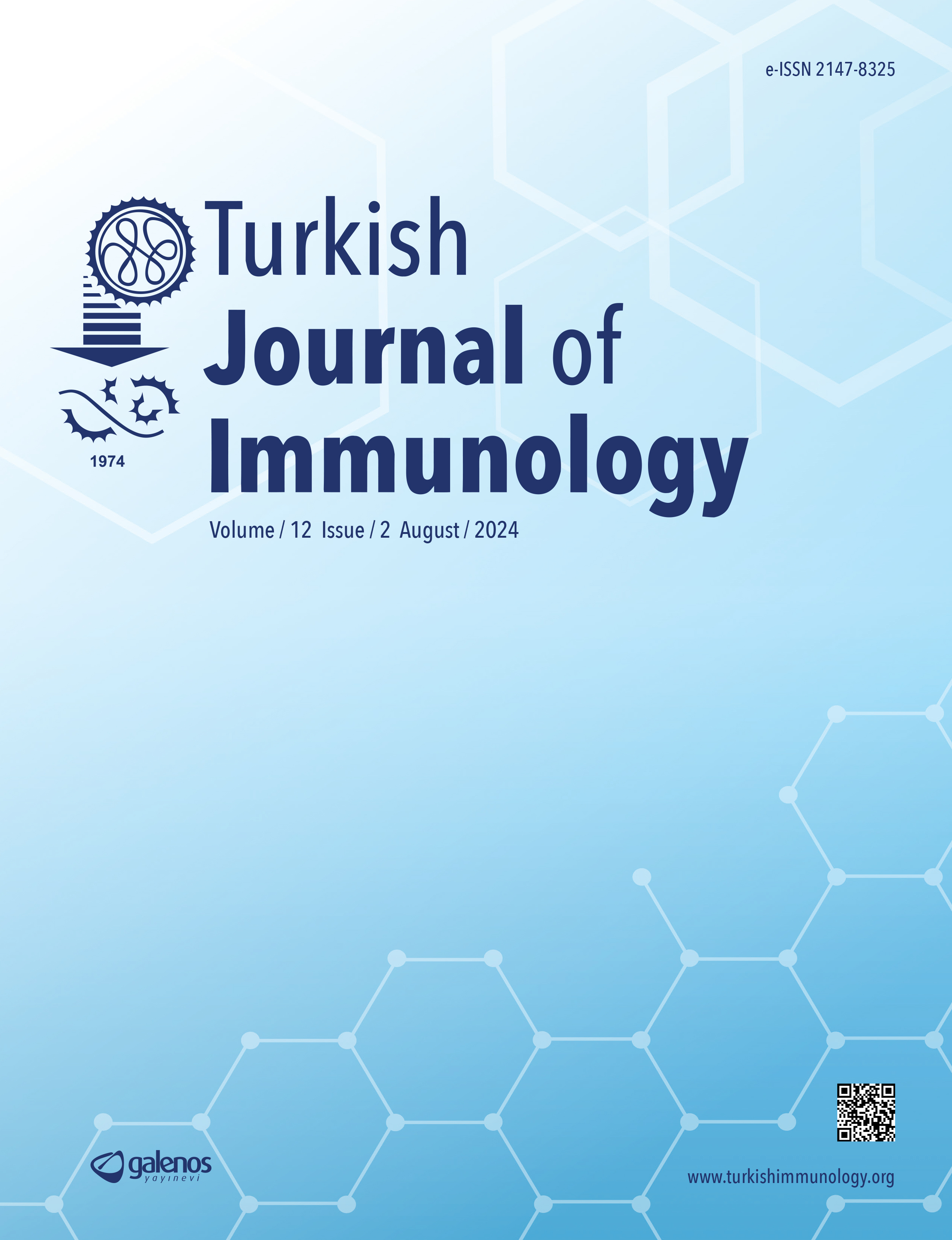













Gene Regulation of MHC Class-I and MHC Class-II
Şule Karataş1, Fatma Savran Oğuz212
Introduction: Peptides obtained by processing intracellular and extracellular antigens are presented to T cells
to stimulate the immune response. This presentation is made by peptide receptors called major histocompatibility
complex (MHC) molecules. The regulation mechanisms of MHC molecules, which have similar roles in the immune
response, especially at the gene level, have significant differences according to their class.
Objective: Class I and class II MHC molecules encoded by MHC genes on the short arm of the sixth chromosome
are peptide receptors that stimulate T cell response. These peptides, which will enable the recognition of the antigen
from which they originate, are loaded into MHC molecules and presented to T cells. Although the principles of
loading and delivering peptides are similar for both molecules, the peptide sources and peptide loading mechanisms are
different. In addition, class I molecules are expressed in all nucleated cells while class II molecules are expressed only in
Antigen Presentation Cells (APC). These differences; It shows that MHC class I is not expressed by exactly the same
transcriptional mechanisms as MHC class II. In our article, we aimed to compare the gene expressions of both classes
and reveal their similarities and differences.
Discussion and Conclusion: A better understanding of the transcriptional mechanisms of MHC molecules will reveal
the role of these molecules in diseases more clearly. In our review, we discussed MHC gene regulation mechanisms with
presence of existing informations, which is specific to the MHC class, for contribute to future research.
MHC Sınıf I ve MHC Sınıf II Gen Düzenlenmesi
Şule Karataş1, Fatma Savran Oğuz21İstanbul Üniversitesi İstanbul Tıp Fakültesi, Tıbbi Biyoloji Ana Bilim Dalı, İstanbul2İstanbul Üniversitesi İstanbul Tıp Fakültesi, Doku Tipleme Laboratuvarı, İstanbul
Giriş: Hücre içi ve hücre dışı antijenlerin işlenmesiyle elde edilen peptitler, immün yanıtı uyarmak amacıyla T
hücrelerine sunulur. Bu sunum major doku uygunluk kompleksi (MHC) molekülleri adı verilen peptit reseptörleri
tarafından yapılır. İmmün yanıttaki rolleri benzer olan MHC moleküllerinin özellikle gen düzeyindeki düzenlenme
mekanizmaları sınıfına göre belirgin farklar içermektedir.
Amaç: Altıncı kromozomun kısa kolunda bulunan MHC genleri tarafından kodlanan MHC sınıf I ve sınıf II
molekülleri, T hücresi yanıtını uyaran peptid reseptörleridir. Kaynaklandıkları antijenin tanınmasını sağlayacak olan
bu peptitler, MHC moleküllerine yüklenir ve T hücrelerine sunulur. Peptitleri yükleme ve sunma ilkeleri her iki
molekül için benzer olsa da, peptit kaynakları ve peptit yükleme mekanizmaları farklıdır. Ek olarak, MHC sınıf I
molekülleri tüm çekirdekli hücrelerde ifade edilirken, sınıf II moleküller yalnızca Antijen Sunan Hücrelerde (ASH)
ifade edilir. Tüm bu farklılıklar; MHC sınıf Iin MHC sınıf II ile tam olarak aynı transkripsiyonel mekanizmalarla
ifade edilmediğini göstermektedir. Yazımızda her iki sınıfın gen ifadelerini karşılaştırıp benzerliklerin ve farklılıkların
tartışılması amaçlanmıştır.
Tartışma ve Sonuç: Bir çok hastalığın immünolojik temelini oluşturan MHC moleküllerinin transkripsiyonel
mekanizmalarının daha iyi anlaşılması, bu moleküllerin hastalıklardaki rolünü daha net ortaya koyacaktır. Derlememizde
mevcut bilgiler ışığında MHC genlerinin düzenlenmesi mekanizmalarını MHC sınıfına özgü bir şekilde ele alarak, bu
konuda yapılacak olan sonraki araştırmalara katkıda bulunulması amaçlanmıştır.
Manuscript Language: Turkish




